Would you trust a robot to grow your food, to operate on you, to fight a war on your behalf, or to save your life in an emergency? We look at how robots are on course to alter our lives. Plus, new insights into how the Sun works, and why climate change could change the taste of our coffee.
In this episode
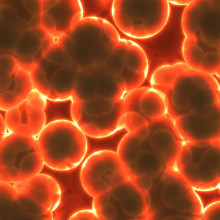
01:00 - Sleeping bacteria evade antibiotics
Sleeping bacteria evade antibiotics
with Professor Nathalie Balaban, The Hebrew University
Across the world, bacteria are becoming increasingly resistant to the most commonly prescribed antibiotics. But resistance isn't the whole story. Bacteria frequently enter in periods of dormancy, when they effectively switch off. While they're in this state they stop being sensitive to the effects of many types of antibiotics. So even if they’re not resistant, they still might not be killed by a drug. And this can mean that infections keep coming back, so doctors end up using more antibiotics and that makes the resistance problem worse.
But to know how long the dormant spell is for a specific bug has always been hard to measure, and it’s certainly beyond the scope of most hospital microbiology departments. Now scientists in Israel have found a way to do this much more easily. Chris Smith heard how from Natalie Balaban, at the Hebrew University in Jerusalem...
Natalie - We actually discovered under the microscope that bacteria are able to survive antibiotic treatment, not only because they are resistant, but they have an alternative strategy, which is just to go dormant. If they are dormant they are going to survive the antibiotic treatment even if they are not resistant. So, if they wake up and the antibiotic is still there, that’s fine, the antibiotic will kill them because they are not resistant but, if they wake up after the antibiotic treatment has been stopped, the infection will go on.
Chris - In our present way of coping with, or managing infections in hospital or a general practice setting we don’t really consider the idea that different bugs might have different periods of dormancy, we just give a course of treatment and we assume that the bugs are going to die. But you’re saying we need factor in the fact that there will be dormant bacteria and we need to know how long that is for different strains of bugs and different infections?
Natalie - Exactly. Because these dormant bacteria can actually prolong the need of antibiotic treatment.
Chris - What have you done to get a handle on that previously intractable problem?
Natalie - The idea is to use statistical measurements. We put a small culture of 100 bacteria, we put on the antibiotic for different durations, and then we see which culture like that has survived the antibiotic treatment. By statistically analysing the results of whether they grew or didn’t grow we can know whether the bacteria can survive prolonged antibiotic treatment, and how long they can sleep under antibiotics.
Chris - How would that change clinical management? So, in a hospital setting a patient has a swab taken, we know they’ve got an infection, the swab would come to the laboratory. How would your technique affect the type of antibiotic the doctor would give, how long for, and how they would then manage the patient?
Natalie - When a swab is taken today, the hospital measure resistance and accordingly decide what antibiotic to give, and this is one number. We add another number which means how tolerant or how long the bacterium can sleep under different drugs. These numbers can direct the type of antibiotic that is maybe better than the initial choice without these numbers, and the duration of the treatment.
Chris - If you find there’s one particular strain of bug that you get from a patient and if you discover that has a very long dormant period, might you instead switch antibiotics altogether because it would be better to use a different antibiotic and, therefore, you minimise overall the exposure of the environment to more antibiotics?
Natalie - Yes, exactly. These dormant bacteria are better killed with other antibiotics that are less used than the common antibiotics that we use and, therefore, either changing the treatment would be the way to go if you have one of these sleeping bacteria in a patient, or the other way is to extend the duration of treatment.
Chris - What do you think the difference this could make would be? What’s the scale of the impact of what you’ve discovered?
Natalie - I think that what it can help is really tailor the antibiotic treatment to the properties of the bacteria that we have, and not only the property of resistance. It would enable us to extend the duration of treatment when needed and prevent relapse of all kinds of infections that we know are coming back after the patient’s stopped the treatment.
But, on the other hand, if you can test and see that the bacteria in one patient are actually not dormant and don’t have this property then you can shorten the duration of treatment.
Chris - So it’s not just about lengthening treatment, also it’s about reducing the overall use of antibiotics potentially - why use overkill if you don’t need to?
Natalie - Exactly, exactly.

05:55 - Understanding sun spicules
Understanding sun spicules
with Professor Lucie Green, UCL
We don't really know that much about how our local star works, but a recent paper in the journal Science has shed light on Sun spicules. These are long strands of high energy plasma that are fired off into space at high speed, but thier origins are something of a mystery. Graihagh Jackson spoke to space scientist Lucie Green from UCL about sun spicules, and about how a group of scientists have built a model of them in action...
Lucie - I think it’s worth setting the scene that our Sun is a ball of gas, and it’s a ball of seething, roiling gas. The surface of the Sun isn’t a solid surface at all, it has a very, very low gas density and because of all this energy coming from the interior of the Sun, the surface gas is moving around all the time and within that, the magnetic fields of the Sun are also being moved around. So these spicules are being formed in a very, very dynamic part of the Sun.
Graihagh - What happens; why do they suddenly just fire off like that?
Lucie - That’s been a question that’s been worked on for a long time, and that’s one of the finding of this paper is to help us understand what mechanisms are at play. So you need to be able to come up with a way that you can accelerate gas away from the surface of the Sun, so against the Sun’s gravity and, at the same time, you need to be able to heat the gas. The reason that spicules are so interesting and important for the Sun is they seem to be a way by which you can send hot gas into the atmosphere of the Sun and do things like heat the corona to the millions of degrees that you mentioned, and supply the mass for the solar wind.
What this paper has done is to be able to say well actually, there’s a particular evolution of the magnetic field at the bottom of the spicules that can store tension, and release tension in the magnetic field. So imagine the magnetic field being almost like a guitar string that has a tension, and when you release that you can accelerate the plasma - a bit like a slingshot effect.
Graihagh - Oh I see. Why didn’t we really know much about this before? I imagine the Sun - well we’re told not to look at it directly so I imagine it’s quite hard to study?
Lucie - It is hard to study and it’s hard, particularly in this layer of the Sun’s atmosphere lower down and that’s because the physics there is incredibly complex. It’s interesting to me because the upper atmosphere of the Sun (the corona) we focused on for a long time, and the lower layer that this paper is focusing on has, perhaps, not received the focus. Not because we’re not interested in it but because it’s a really complex region. The plasma conditions there are very interesting, they’re relatively high, and the magnetic field evolves in very interesting ways. So we’ve needed to make this step wise development in the physics to be able to get to the point where we can start to understand why spicules form, and the model that’s been developed by this team is absolutely a world calls model and leading the way in our understanding.
Graihagh - They took data from NASA’s spacecraft IRIS and a telescope, and then put it all into this model and I understand it took a year to run this model because it was so complicated. The thing I want to ask you is you’re not involved in this study so you’re not biased, so can you just sum up how important these studies are in terms of your field?
Lucie - Absolutely. I’ve been an admirer of this model, this simulation for a long time and it’s becoming more and more realistic, and I think it’s the best model we have. It’s such an important area of the Sun to understand because the region of the Sun that they’re looking at is kind of the gateway to the atmosphere. It regulates how mass and energy flow into the atmosphere of the Sun.
What’s been really important about this team is that they have, right from the start, recognised that when you launch a space mission you need not only to have that data from the mission, but you also need to develop the model to go alongside it. So, within your computer, you create the conditions as best you can and then you make predictions about what the observations should show if you’ve got particular physical processes happening and that allows you to test your physics models, constrain the models with the data. Working in parallel with the simulations and the data has been a big focus of the IRIS mission and a big focus of this team, and now it’s really paying off.
Graihagh - That’s really interesting. But what are the implications for us here on Earth?
Lucie - I think when it comes to applying this knowledge to us here on the ground, really the link is between what the Sun’s doing and something what we call space weather. I think that his study will help us understand more the science of space weather, and by that I mean understanding how the Sun’s atmosphere is varying over time. For example, the temperature of the atmosphere and the outflow of something called the solar wind, and it’s the solar wind flowing towards the Earth that is the driver of a lot of the space weather that we receive. So I think this study is really about understanding and developing a much more detailed picture of how the plasma, the gas, and the magnetic field in our local star evolves.

12:20 - Genetic insights into pregnancy problem
Genetic insights into pregnancy problem
with Dr Catherine Aiken, University of Cambridge
Scientists have discovered why some pregnant mothers develop the potentially life-threatening condition preeclampsia. Obstetrician and researcher Catherine Aiken from the University of Cambridge spoke to Chris Smith about the findings...
Catherine - Preeclampsia - it’s one of the great obstetric conundrums. It kills over 75,000 women worldwide each year, and yet really, we struggle to have any handle on what it is, how to tackle it, and truly what’s the root of causing this.
What we have here is a new study that brings a different angle to tackling preeclampsia. Lots and lots of people have looked at mum’s genetics in trying to find susceptibility here. This paper has a clever twist in that they’ve actually looked at the genetics of the baby to try to find out how they might be driving disease in the mum.
Chris - When a person has preeclampsia, how would you recognise and how would a person know they’d got it?
Catherine - About 1 in 20 women develop preeclampsia during pregnancy so it’s actually a really common condition. As doctors we struggle though because people present in lots and lots of different ways. People come with a headache, people come with a small baby, people come with very high blood pressure, and that enormous range of symptoms and signs, trying to disentangle exactly what is preeclampsia becomes really tricky.
Chris - So you don’t know you’re at risk of it, you don’t know it’s going to be a problem until you get pregnant, and then it’s not until you’re quite far through the pregnancy when you get problems and then it might even be a bit late?
Catherine - That’s exactly it. And that’s why this kind of study is really important because what we need, what we really urgently need are ways of telling who’s at risk.
Chris - What have this group done?
Catherine - What this group have done is take an enormous number of baby’s genomes. So they’ve got the genetics of almost 5,000 babies whose mums have had preeclampsia during the pregnancy from both Iceland and the UK. They’ve also got 300,000 babies whose mums didn’t have preeclampsia during the pregnancy that they can compare the DNA. Remarkably, from that enormous amount of information they’ve managed to pinpoint a single variant in the babies whose mums did have preeclampsia that’s more common than in the ones whose mums didn’t.
Chris - What area of the DNA is involved, or what change do they think is in these infants that means they’re at increased risk of their mum having preeclampsia?
Catherine - The little piece that they’ve found that’s different in these babies is right beside a gene that’s involved in forming the placenta. Now the placenta is the interface
between mum and baby; if the placenta doesn’t form properly then that can be the driver for preeclampsia. It’s very possible that what they’ve found is a developmental problem with the placenta. So it’s a really attractive theory that the baby has this genetic variance that that then means that the placenta doesn’t develop properly, and then that drives changes in the mum that we see as this high blood pressure, protein in the urine and, ultimately, risky preeclampsia pregnancy.
Chris - What proportion, roughly, of babies in which preeclampsia happens would this account for?
Catherine - The actual increased risk is about a 20% increase in the risk of preeclampsia, so it’s certainly not the answer to finding all of preeclampsia cases but this is the kind of insight that we need. The really interesting thing is that having found this little piece of DNA has then given them a rationale to go to look at other bits around the same region of the gene. They’ve also found a new novel variant based on this knowledge and that's the kind of snowballing effect that this study gives us to be able to bring in other insights that all piece together to form a big picture of how we can tackle preeclampsia.
Chris - Ultimately, does this give us the ‘holy grail’, to use a horrible cliche, which is a test of who might be at risk, so when you’re booking in with your GP and having your antenatal screen this could be included, or something like this in the long term in order to look at who might be at risk and worth keeping an eye on?
Catherine - That would be fantastic. That’s the ultimate goal with this kind of research. We’re quite far off that at the minute - I don’t think they’ve found the single basis of a test that would work that way. But, ultimately, when we’re reading these studies, we allow ourselves to get a little bit excited at the thought that one day this might be contributing to that kind of test.

16:57 - Down to Earth: How space science gave us... airbags
Down to Earth: How space science gave us... airbags
with Stuart Higgins, Imperial College London
Physicist Stuart Higgins looks at how technologies and breakthroughs made originally for the space race are now helping to make life better for us here on the ground, and this week... airbags.
Stuart - If you want to go to space, you need to get off the planet and you need a lot of energy to overcome gravity’s pull. The technology of choice for years has been the rocket. Take NASA’s space shuttle, for example; it had a big orange fuel tank attached to its belly containing liquid rocket fuel, and two thin rockets strapped to its sides. It was these two rocket motors that provided most of the thrust to get the shuttle off the ground. Each was filled with over 450 tons of solid rocket fuel. Each rocket was heavier than a fully loaded jumbo jet and produced 12 million newtons of thrust.
But how do you set off a lump of rocket fuel that's over 15 metres tall? You need a pyrotechnic initiator; it’s a gadget that starts off a chemical reaction. In NASA rockets, an electrical current is passed through a wire which heats up and ignites a small explosive charge. This in turn sets off a reaction in a chemical called lead azide; it’s a molecule made up of the metal lead and three nitrogen items, that’s the azide part. These nitrogen atoms react to produce heat and nitrogen gas which trigger another more powerful explosive that in turn sets off the rocket and… lift off.
It turns out that this rocket science is used in lifesaving technology here on Earth… the airbag.
Airbags, like rockets, contain a pyrotechnic initiator which causes the rapid breakdown of a chemical producing lots of gas. In fact, one rocket manufacturer in Japan directly used its technology to help a car manufacturer make their airbags.
Nowadays, airbags tend to use chemicals that react more efficiently and cleanly, but many were originally based on sodium azide which, like the lead azide used by NASA, reacts producing nitrogen gas. Two molecule of sodium azide reacts to give three molecules of nitrogen gas, and the gas occupies a volume far greater than the original solid. In fact, only about 130 grams of sodium azide is needed for a 70 litre airbag.
During a crash, an electrical circuit triggers the reaction filling the airbag in less than 30 milliseconds, much faster than the blink of an eye. The airbag increases the time it takes you to slow down during a crash - the longer time taken, the lower the force applied to the body. This is particularly important for delicate organs such as the brain which can strike the inside of the skull.
So that’s how launching space rockets has led to airbags that save thousands of lives each year.

20:20 - Climate change coffee swap
Climate change coffee swap
with Alex Summers, Cambridge University Botanic Gardens
New research out of London’s Kew Gardens warns that climate change will significantly affect where we can grow coffee in the future, which may well affect the flavour. Georgia Mills went along to the Cambridge University Botanic Gardens, with Glasshouse Supervisor Alex Summers, to hunt for some coffee beans...
Alex - The whole bit back there is just coffee, so this is all coffee here.
Georgia - There’s no beans on show at the moment. I guess it’s the wrong time of year?
Alex - Absolutely. Our coffee tends to produce flowers and fruits later in the year and, as you can see at the moment, we have nothing.
Georgia - But you do have a coffee machine?
Alex - We do indeed have a coffee machine. I think like all institutions, many days are run on the back of coffee.
Georgia - You have coffee beans growing here at the botanic gardens. We just saw them, they’re in a greenhouse. They can only grow in certain places in the world?
Alex - Absolutely. Coffee in itself is what we think of as a tropical crop; that means that it can grow in latitudes between the Tropic of Cancer and the Tropic of Capricorn. Even within those latitudes they’ll still be areas that it can and can’t grow. So if you can imagine within the tropics, you might get the really hot lowland plains, and you might get those cooler more montane environments. In the situation of those cooler more montane environments the temperatures never get to quite the extremes that you would see in the lowlands. Coffee, in itself, is from the Ethiopian highlands and they’re a cooler tropical environment.
So let’s go with a Colombian coffee…
Georgia - So despite spilling half of it, Alex brewed up a rather excellent cup of Colombian coffee. But will this soon be a luxury of the past? Because a paper out in Nature Genetics has used modeling to predict that 39 to 59% of our current coffee growing areas could be rendered unsuitable by climate change…
Alex - I think this is an interesting thing to bring up because I think it’s the case for many plants from many environments. The fact is that climate change in happening, it’s coming along, and that affects the temperature environment in which many of these plants grow. So, in the case of coffee, we’ve spoken that it’s from these more montane parts of the tropics. What that means is as temperatures rise, it has a tendency to force coffee itself out of the locations that we tend to find it. Probably higher up the mountain ranges or the bits of the Ethiopian highlands that it’s found in. If that means you’re a coffee farmer, it might mean that some of the areas you're currently using to farm become unsuitable environmentally. Probably become too hot or probably have a climate which changes enough that you’re unable to grow the coffee there to the same extent, and to the same efficiency that you’ve been growing it there previously.
Georgia - What does this mean for the future of our coffee supply?
Alex - The thing with climate change is that it’s not even. Whilst certain habitats will become unfit for coffee there will be other ones that open up that will become fit for coffee. I think what essentially this paper is highlighting is that there are many areas that we are going to lose for coffee growers, but there will be many areas that will then become available for coffee to be cultivated in. I think what it highlights is in this changing world is that we’re going to have to be flexible to changing our cultivation practices, and also to make land available where it’s required to grow coffee. But it does mean that we have to be cautious to look after what we’ve got so the good agricultural land we’ve go we have to look after. Being sustainable with our practices so that we don’t ruin areas so that we can’t move into them in the future. Also, for those bits of natural habitat and environment that we’ve still got left that hold huge diversity that can be bred into these crops to change them in the future as we need to that we don’t absolutely destroy that either. So I think that it’s a pragmatic approach.
Georgia - So there is hope for the humble coffee bean. It may move location, which can affect the flavour and the prices, but if we’re careful with our practices, we will still be able to get hold of it. But what about the growers?
Alex - If you’re a local farmer and you farm a particular area, and that area then becomes unsuitable for coffee cultivation, it’s not as simple for you to pick up your land, move it to a new suitable location and go ahead. So I think in these cases here we also have to be aware of the effects it has at a local scale. Not just at the national scale where we can say positively that we’ll be able to move the coffee cultivation from one location to another, we also need to understand how it’s going to affect the local communities who depend on that for a livelihood.
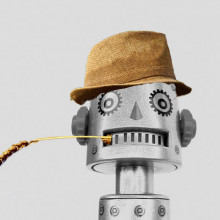
25:46 - Can you trust a robot farmer?
Can you trust a robot farmer?
with Professor Simon Pearson, University of Lincoln
Chris Smith spoke to Simon Pearson from the University of Lincoln, who looks at how robotics could revolutionise the way we grow our food. Firstly, Chris asked what these robots actually do...
Simon - Probably the earliest ones that you’ll start to see are for crop sensing. Basically it’s a very simple robot which wanders round the field, looks at crops, measures soil moisture, measures soil chemistry and provides information back to the farmers. Think of the Mars rover, but rather than robots wandering round Mars we’ve got robots wandering round Earth.
The next manifestation that will come through will probably be crop picking robots, so these are robots which, again, go into the field. They might not be autonomous, they might be mounted on a tractor or an existing agricultural vehicle but there’ll be sensors on the robot, the robot will then detect crops, assess the maturity state of the crop, and then pick them.
Chris - As it’s driving round it’s using sensors like cameras to look at the crop and so on. Can it distinguish between a pea and a potato, or a pea, a potato and a weed?
Simon - It can definitely do that. We’re doing algorithm development, which is really using machine learning techniques so we have camera systems looking at crops. What the robot has got to do is segregate the weed from a crop plant. If it’s a hoeing robot you don’t want to hoe the crop rather than the weeds. So there’s some very sophisticated algorithms which power those robots to give it situational awareness. With crop picking that’s particularly difficult because you’re looking at one crop, but then you're looking for different features of the crop. Whether broccoli, if it’s ready to harvest, whether that broccoli is 6 cm, 9 cm, or 12 cm, that’s really quite difficult.
Chris - If I look at the farmland near where I live, there are patches of the field that are clearly really good for that crop because the crop is three times taller there than it is in the bit next door where there might be almost bare earth. Could that be because there’s regional variations in the soil quality, the drainage quality, the amount of nutrients that are there, and could a robot that has the time the farmer wouldn’t, be able to painstakingly go along and dress the soil in one place to favour the crop and not waste fertiliser on an area that clearly already has sufficient?
Simon - That’s the whole idea. That’s one of the big opportunities in robotics, so it’s about field mapping and sensing. To be able to produce informed decisions and accurate decisions or information on why you’ve got this infield variabilities is probably one of the biggest opportunities in agriculture.
The reason is the theoretical yield of crop wheat is about 17 tons per hectare. The delivered yield of a crop of wheat in the UK is about 9. Now within patches of the field you will find areas that are close to that magical yield potential, but it’s because of the variability in the field that we’re not delivering the yields that we should. So robotics - to enable understanding that variability, and then mitigating against it, could be a key driver of food security in the future.
Chris - How does this go down with farms?
Simon - They’re looking at it very seriously. Farmers are cautious people; they’ve seen lots of clever ideas in the past. They’re hoping it succeeds but the jury’s out, they're waiting for some of these technologies to deliver.
Chris - Is there not a cost in human terms? If you’re paying a robot that doesn’t cost you anything once you've got it running apart from the electricity to do that job, you’re not paying a human.
Simon - Yes. They’re sensing robots - so the Mars rover manifestation - that will help with the yield gap; it won’t really impact human labour. It will be an environmental benefit because it will be a more precise application of pesticides and fertilisers to sustainably grow yield without increasing the impact on the environment. The crop picking robots - the industry's very highly reliant on very large numbers of seasonal labourers. They’re very concerned with the impact of Brexit in terms of the availability of labour, so the UK industry is very interested in robotics to try and provide a sustainable way to harvest their crops.
If you go to Japan, the average age of farmers in Japan is 69 and his kids don’t want to go into farming. There’s a demographic issue of aged farmers and their children not coming through or young people certainly not coming through into the farming industry. There will be more people retired in China by 2030 than the entire population of Europe so they have an enormous demographic problem. They’re very reliant on migrant labour in the United States to harvest crops. So there’s huge global trends suggesting that labour availability is going to be scarce for many of these agricultural jobs, particularly crop harvesting.
Now that job itself - you’ve got to be pretty fit to do it. It’s a challenging job, you’re in all sorts of environments, it’s monotonous, it’s hard work. Just the sheer issues with that job itself are deterring people from entering the workforce.
Chris - Are these robots up to doing this sort of heavy lifting in terms of you couple a big plough on the back of a tractor, and you drag it through the field? Are these robots robust enough for that or is there still going to be a farmer ploughing fields for the foreseeable future?
Simon - It’s very early days for crop harvesting robotics. Probably the whole field’s only two years in. Systems will get more and more robust but there will be a limitation of what they can do so big tractors are always going to be needed, just because of physics. You need a very powerful tractor with a very large engine to turn over soil at a high rate. Other jobs like crop harvesting - there you’ve got less of a physics issue and you can have a lighter weight machine, accurate machines picking crops all day and every day.
Chris - Are you comfortable placing our agricultural future in the hands of a robot?
Simon - If you’re winding the clock forward over 20 years I would say yes. But there’s some quite significant technical challenges that we’ve got to face up to before we can put our future in the hands of a robot.
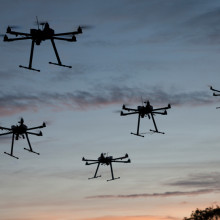
31:60 - Can you trust a robot soldier?
Can you trust a robot soldier?
with Emeritus Professor Noel Sharkey, University of Sheffield
One particularly controversial application of robots is in the military. Terminators, transformers and the like might make for good sci-fi movies, but what about the reality? What kinds of robots exist that could fight a war? And can we trust them? Katie Haylor spoke with Sheffield University’s Noel Sharkey...
Noel - There are many kinds really. Anything from combat robots being used in the air to attack people. There are robots on the ground that will help retrieve soldiers from the battlefield. There are a lot of bomb disposal robots that go after improvised explosive devices under cars and that sort of thing. Then there are robots being used for simple things like cleaning the hulls of battleships.
Katie - Which ones do you think are particularly novel?
Noel - The most novel are also the most dangerous. Lethal autonomous weapons systems will fly out or drive out, find their own targets and kill them without human intervention.
Katie - Is this sci-fi, is this stuff stuck in a laboratory or are these robots actually being used?
Noel - They’re not being deployed yet but they are certainly being tested largely by the United States, by Russia, by the UK, by China, by Israel, and some other countries that are more secretive about them, so it’s not long before they will be used. They could be used now some of them but they’re not using them because there’s a lot of debate as to whether it’s right to have machines that can make decisions, life and death decisions, without a human helping them.
Katie - Do we really know that a robot is going to do what you tell it to do, say in a battle situation?
Noel - The more autonomy you give a robot weapon - we’re talking here about tanks, submarines, aircraft, gunboats, all those kind of things. Traditionally military weapons, not terminators. The more they work on their own, the more they are likely to come upon unpredictable events. In a battlefield, there must be a very large number, if not infinite number of unanticipated actions. At that point you can’t have fully tested an autonomous robotics device and so it will cause accidents, it will be unpredictable.
Katie - Is there any case for trusting robots in military situations? Could a good relationship with a robot be good for soldier morale?
Noel - In very, very difficult, dangerous situations people tend to bond. And it turns out that people are bonding with remote controlled bomb disposal robots and that’s very dangerous because they love it so much, they take it to the droid hospital, they won’t take a new replacement, they want the same robot back. Soldiers then are prepared to give their life to save that robot because it’s their buddy. So you don’t want that kind of trust relationship, but I would say they trust them to find bombs for them.
There's a good case for trusting robots that will extract people from the battlefield. A battlefield extract assistive robot called the Vecna BEAR was being developed and that’s like a little forklift truck, it goes into the battlefield, picks up soldiers and brings them back. But the thing was that they found that soldiers didn’t really trust them because who wants to be picked up by a forklift truck - maybe it’s the enemy. But when you put a bear’s head on it, then people feel more comfortable it. They trust it more because it reminds them of their childhood. You’re lying there wounded in a sorry state and you kind of regress a bit, and you look up and you see this big bear coming to your rescue and you think... ah.
Katie - In a combat situation, aren’t robots more capable than humans? They’ve got better senses, they’re stronger - doesn’t this mean we should be trusting them more than a human soldier?
Noel - I think our perception is still well beyond anything you find in the military in any sense. We can deal with shadows in a way that machine vision can’t. Machine vision is nowhere near the capability of humans. They could be very good, for instance, for detecting a sniper, so you can use auditory information to quickly swing round and know the exact source of the sniper and fire a weapon straight at them. But snipers are the trickiest people on the battlefield. Accuracy is not everything, it’s being able to determine the legitimacy of your target. A human can have what you call human deliberation and they can look at a target in context. It’s also not that smart to shoot people sometimes when killing them could cause a riot and they come and get you.
There’s a really famous example in Iraq of soldiers because they had their machine guns raised. They’d trapped some insurgents in an alleyway and when they looked closely the saw that they were carrying a coffin. They took off their helmets and lowered their weapons out of respect. A robot will not be able to do that because it’s an unanticipated situation.
You can do all the testing in the world but what happens when one autonomous robot weapon meets another autonomous robot weapon? Or worse, a swarm of robot weapons on the border meets a swarm of other robot weapons. Well what happens? I don’t know and nor does anybody else on the planet. Because, if you take two algorithms and you don’t know the contents, and nobody but a fool would reveal the contents of their weapon’s algorithm, it’s totally unpredictable.
Katie - In the next five years, what is the most likely autonomous weapon to be used?
Noel - I would like to say none, because I’m part of a very large campaign of 60 NGOs, Human Rights Watch, the Nobel Laureates, Amnesty International, etc., and we’re working very hard at the UN, and getting headway to have any weapon prevented that does not allow effective human control or meaningful human control. There are some autonomous weapons around that get used all the time. You would really call them an automatic weapon and people can trust those more because what they do is they shoot down missiles that are coming at you.
Katie - But we’re not talking realistically about enormous humanoid robots roaming around the battlefield are we?
Noel - No, very definitely not. And they would be easy to shoot a couple of legs off because they’d stumble and fall over. We’d be much more likely to see a massive tank. The Russians are developing the Armati T14 tank and making it autonomous and that’s a sort of supertank. Nobody’s talking about a terminator robot. The Russians have made a terminator robot that fires a machine gun, but they’re not being terribly serious.
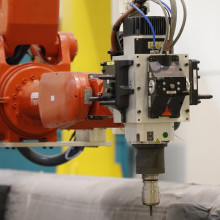
38:52 - Can you trust a robot surgeon?
Can you trust a robot surgeon?
with Mr Hutan Ashrafian, Imperial College London
Surgical robots have been around for a while, but how autonomous are they, what can they do, and should we trust them? Graihagh Jackson spoke to Hutan Ashrafian - surgeon and lecturer at Imperial College London...
Hutan - Robots have been around in surgery and in health care for over 30 years. But they’ve had a particular rise in fame over the past ten years because they offer so many good things that we like in surgery such as increased precision, better outcomes, smaller incisions, shorter hospital stays, and quicker recoveries. They are used in nearly every organ system that we have today and, typically, they’re used to take away cancers, or reconstruct parts of the body by connecting two blood vessels together. They’re very fabulous and, as you said, they can be used for injections in the eye because they’re very precise. But they also have this capability of acting as platforms for all sorts of new novel technology such as being able operate from inside the body rather than outside the body. Or using some of the new devices that we have at Imperial College such as the eye knife, which is an electrical scalpel whose smoke can detect cancer.
Graihagh - That’s absolutely incredible and I want to ask you more about that. But what you’re talking about here, the eye knife, that’s all still very much in the domain of human control - you control it when you're doing surgery. What about the autonomy, the robot doing and thinking for itself?
Hutan - At the moment, safety tends to be the strongest paradigm in modern surgery and all the robots we tend to use are using the master/slave system. That means the surgeon is the master and the robot is the slave so that it’s essentially an extension of the human mind to make decisions. The human mind makes the decisions and the robot performs the action and in that sense the robots are not at all autonomous. There are robots that help guide people and you can have augmented reality where you can overlay images in your robotic field, but currently no robots are autonomous.
Graihagh - What needs to happen next for say a robot to take out your appendix?
Hutan - We need to know, with good evidence, that an autonomous robot would be safe. If this an autonomous robot with a human level of consciousness, can it make decisions and can those decisions be trusted? At the moment we don’t have that evidence, and we don’t have that technology so we can’t go down that road. But there is potential, as strong AI tends to become stronger literally every day, we might be able to use robots that have a level of autonomy in our day to day operations.
Graihagh - Is that just a case of coding algorithms? I know we’ve got more than three laws that enable robots means they can’t hurt you or me.
Hutan - There’s up to six classical laws that were started off by Isaac Asimov, but people have modified them - I did one of them myself. But the issue is that although there are these laws, we need to make sure that if a robot has autonomy and has a human level of consciousness, then it will act in the human best interest. Potentially that may happen one day, although it’s not currently there yet.
Graihagh - Why would we want something like this? You’ve spent years training to do the work you do, why would a robot be better than you?
Hutan - The robot might have increased precision, might have better access to parts of the body. But the reality is the robot can be manufactured and automated and there are up to 5 billion people worldwide that don’t have access to quality surgical care or anesthesia. This could fulfill and complete that void to ensure that everyone worldwide could have surgical care at a very high level. There is a downside, and the downside might be that if we do have robots that have a level of autonomy and decision making that is independent, how can we trust them? Can we necessarily trust them? And will patients trust them to operate on them because this is a new device? Whereas before you’d have the doctor/patient relationship - now you have the doctor/patient/robot relationship.
Graihagh - Would you trust a robot to take out your appendix?
Hutan - If the evidence was available and it was successful then yes, I would be happy for it, although I would say 20/30 years.
Graihagh - It’s still a long way off then?
Hutan - Yeah. I would say a long way off.
Graihagh - So presumably there are some risk associated with this?
Hutan - Once clear risk is diseases are unpredictable by their very nature. So although we can have robots that have been programmed in a particular way to look for particular diseases in a particular context, sometimes diseases don’t present themselves in a standard fashion. The way we’ve been trained is to think out of the box and to be able to assess patients from multiple angles and multiple facets of their health care. A robot, at the moment, doesn’t have that ability and therefore might miss something.
Chris - One of the things that surgeons say to me is that it’s the feel which really matters and actually getting your hands dirty (metaphorically) is 90% of the experience. Now if you’re operating a robot you don’t get that same visceral (excuse the pun) interaction with the tissue. Do you think that this is a good substitute?
Hutan - The feel effect that people talk about is very important for a trainee surgeon, particularly in open surgery, but the evidence suggests that for some operations in some parts of the body, although you don’t get that tactility, in some settings it doesn’t seem to have caused any difference in outcomes. Whereas in other operations in other settings it does seem to be a critical factor. So it really depends on the organ system that is being talked about, but for a trainee surgeon clearly that’s an important step. It might be one for a robotic surgeon on their learning curve and most of the current robotic platforms in use today tend to have a 3D visualisation scheme to try and offer the surgeon a depth-of-vision that can offer them something that would reflect what they see in real life in an open surgery so that they can have better outcomes.
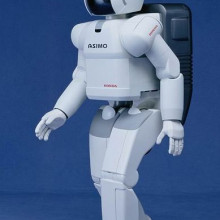
45:25 - Can you trust a robot life-saver?
Can you trust a robot life-saver?
with Professor Kerstin Dautenhahn, University of Hertfordshire
How much can, or should, we be trusting robots in emergencies such as a fire for example? Georgia Mills quizzed Kerstin Dautenhahn, from the University of Hertfordshire, who’s urging caution towards trusting robots in general, following the publication of a study from Georgia Tech...
Kerstin - Researchers simulated an emergency scenario where people had first seen the robot in one condition where it behaved properly and the other one where it made mistakes. Then the researchers wanted to see if the participants would still trust that robot in an emergency situation. So they were creating artificial smoke using theatre smoke, the fire alarm rang, and then the question was would participants follow the robot’s suggestions? What they found is that regardless of whether people had experienced the robot previously as working properly or not working properly, they all followed the robot’s suggestion to go to what the robot proposed was an emergency exit. In fact it wasn’t, the robot was misleading them. What it basically shows is that people are quite trusting when it comes to robots even if they have seen it before not working properly.
Georgia - So people do seem to trust robots, perhaps a little too much in these emergency situations and Kirsten has found a similar trend in her own research…
Kerstin - We’ve done a study where we had different types of tasks that people had to do together with the robot and they had previously experienced the robot either as a faulty robot or as a correctly working robot. The number of unusual requests that the robot then asks people to execute was, for example, to pour orange juice into a plant, or to put a pile of unopened letters into the bin, or to access a friend’s laptop. In the case of throwing away unopened letters, 90% of the participants followed the advice. With regard to pouring orange juice into a plant, two thirds of participants followed the request. Regarding accessing a friend’s laptop, 100% of the participants followed the suggestions. Despite when the robot performed incorrectly they did say it is less trustworthy, but still the big majority followed the robot’s suggestion. What this generally shows is that there is this notion of trust, and sometimes overtrust.
Georgia - So whether you’re being pointed to the fire exits or being asked to pour orange juice on a plant, people do tend to follow the instructions of even comically malfunctioning robots, which could be a bit of a problem…
Kerstin - Robots are machines and similar to our laptops, and our smartphones, and our washing machines they will never work perfectly 100% of the time. Your laptop might crash, your mobile phone suddenly a particular software might not be running any more and you have to reboot. Regardless of how intelligent they might be, regardless of how interactive they might be, these are machines. So what we would ideally wish is that people are sensitive to these breakdowns and are able to recognise maybe I should be careful, maybe I should not follow it’s suggestions, maybe I should switch it off and ask the manufacturer to repair it.
Georgia - Or perhaps try turning it off and on again. But why are we putting so much of our trust into robots?
Kerstin - The physical presence of that robot, the fact that the robot is there with you sharing that particular space in time with you makes it much more a figure of authority as compared to for example a virtual agent on your computer screen or mobile phone. So it seems to be this physical embodiment that plays a role, but there are many more other things that need to be investigated, for example, the long term effect. Would you still trust a robot if over an extended period of time it has shown to be faulty? How would the nature of the mistakes that the robots make influence trust?
Georgia - Our trust of robots could be linked to their shape. For example, would you trust a robot more if it looked like a person?
Kerstin - There is a lot of research in terms of how do people perceive different types of robots. One of the disadvantages with using a humanoid robot is that people automatically generate very high expectations. They will assume that system has human-like capabilities, and human-like intelligence, and also common sense understanding of what happens in the world, and what it is to be human and that, of course, is not the case. We don’t have any machines yet with human level intelligence.
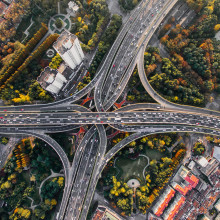
50:19 - Can anti-noise silence a highway?
Can anti-noise silence a highway?
Wouldn’t it be nice to enjoy a peaceful afternoon on an otherwise noisy terrace? Izzie Clarke asked Trevor Cox from the University of Salford to crank up the volume on this acoustic enquiry…
Trevor - Active noise control, also known as anti-noise, is a process that gets rid of an unwanted sound by using a second sound that is specifically designed to cancel out the first. To get active noise control to silence the traffic you would need to produce a sound that is the inverse of the highway noise. When these two add together, the rumble of traffic is removed. Imagine the traffic noise is like a water wave at the seaside, the cancelling sound needs to have a trough where the traffic noise has a peak so that when you add the two together the peaks and the troughs cancel each other out leaving you with flat, still water.
Izzie - So that’s the physics of sound waves covered. But would it really cancel out a noisy highway?
Trevor - Reducing noise this way works very well in small confined spaces, and low to mid frequencies. This is why it’s used inside some cars, and also in those active headphones that you can buy to use on the plane. But try active noise control in a large space where sound can move around in all directions and it doesn’t work unless you have a huge number of microphones that sense the sound and a similarly large amount number of loudspeakers to create the cancelling noise.
Izzie - Not only is noise coming off in different directions, the frequencies would also range outside this ideal low to mid range making it more difficult to remove. Plus, it might create a few new problems…
Trevor - The loudspeakers pumping out the cancelling noise is increasing the amount of sound energy in the neighbourhood. There will be places, maybe your neighbour’s house, where the noise will actually be worse. Finally, even if you could get it to work, it will always be much cheaper to build and maintain a noise barrier, but all is not lost. One trick you might try is to try not to get rid of the noise but to hide it - put on some music on your terrace.
Izzie - So it looks like the sound is here to stay. We also put this on the Naked Scientist forum where Alan said…
Alan - You can buy such good active noise reduction headphones but it’s hardly worth it.
Izzie - Plus, an angry neighbourhood mob doesn’t sound ideal either.










Comments
Add a comment